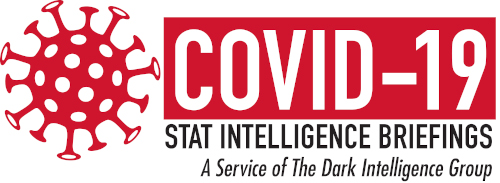Perspectives may be mixed on usefulness of measuring SARS-CoV-2 viral load.
The clinical laboratory profession has dedicated much time, consideration, and energy into developing and performing tests that can detect SARS-CoV-2 RNA, antigens, and antibodies to diagnose COVID-19 and perform epidemiological surveillance. While most of the focus has been on diagnosing COVID-19 and testing patients for it, there are other testing components that clinical laboratories should take into consideration.
To gain a better understanding of tests that clinical laboratories should consider for COVID-19 patients, the COVID-19 STAT Intelligence Briefings Service spoke with Frederick (Fritz) Kiechle, MD, PhD. Currently Medical Director at Boca Biolistics in Pompano Beach, Florida, Kiechle is recognized as an expert within the clinical laboratory community. Kiechle is one of the first pathologists in the US to develop molecular testing in a hospital laboratory and has written several textbooks on collecting, transporting, and preparing medical laboratory specimens.
Managing COVID-19: Two Potential Lab Testing Strategies

For COVID-19 STAT, Frederick (Fritz) Kiechle, MD, PhD (above), highlights two potential value-added clinical laboratory testing strategies for COVID-19 management. (Photo copyright: The Dark Intelligence Group)
Kiechle identified two areas of testing that he believes are often overlooked by clinical laboratories. These two areas include testing for co-infections in those known to have COVID-19, and testing the viral load.
“Co-infections are something that often get ignored, but they shouldn’t be,” Kiechle explained. “Co-infections tend to be bacterial, although I’ve seen published papers on fungal co-infections, and of course there are viral co-infections.
“Companies such as BioFire [Diagnostics] have just released, or are working on getting authorization for, panels that will include SARS-CoV-2, as well as 21 additional respiratory pathogens,” Kiechle said. “These panels include not only respiratory viral, but also bacterial pathogens; they are similar to the syndromic respiratory panels that we’ve used for a long time.
“Companies are also focusing on smaller multiplexes that include RSV, COVID or SARS-CoV-2, as well as influenza A and B, and sometimes H1N1 and others, depending on the individual test,” Kiechle told STAT COVID-19. “Panels such as these may prove very valuable because as we approach flu season there will be a lot of patients who are going to be COVID-19 positive and flu positive, or vice versa. We need to be able to differentiate them because their symptoms are so similar. Otherwise, it will be difficult to confirm the diagnosis.”
Kiechle identified testing the viral load of COVID-19 positive individuals as the second commonly overlooked area of testing. Viral load can vary from day to day but trend over time to determine if the infection is worsening or suppressed. Kiechle considers measuring viral load potentially important as a COVID-19 testing strategy. “We do antigen testing, and that’s great, but very rarely is viral load measured with antigen testing,” he said.
Perspectives Mixed on Usefulness of Measuring SARS-CoV-2 Viral Load
Medical literature that addresses measuring SARS-CoV-2 viral load is developing, Kiechle explained, noting three papers and “a diverse range of perspectives. One paper says viral load predicts mortality, while another says it doesn’t do anything.”
The most interesting paper, according to Kiechle, addresses a fascinating implication. “A Nature paper suggests that the viral load level is highly correlated with the interferon alpha, interferon gamma, and TNF—in other words, with levels of cytokine storm, suggesting the viral load may be driving the cytokines,” Kiechle explained. “So if you don’t have a high viral load, you may never get the cytokine storm. That would mean, this paper suggests, that if you want to know if your patient is moving on to cytokine storm, you should be measuring viral load.”
Ultimately, Kiechle believes testing viral load is something clinical laboratories should be considering. “In my mind, viral load is something we have overlooked, and companies aren’t pushing it,” Kiechle said. “It may be one of those tests that becomes a routine addition to the profile that we’re doing. You can actually do it with the qualitative test that we do; all you have to do is get some mathematics involved and do some additional measurements to figure out a viral load. It’s not impossible; it’s just that it involves additional steps and not many do it.”
Raising awareness of the presence or development of co-infections and better understanding viral load of COVID-19 positive patients may offer benefits for both clinical laboratories and the patients they serve.
Viral load and co-infections are two emerging and important factors to monitor with regard to severe acute respiratory syndrome (SARS) and acute respiratory disease syndrome (ARDS) progression. If testing for viral load and co-infections could reliably predict and reduce risk for patients, these testing strategies could provide a building block for the foundation of value-based care in medical laboratories. Such an approach if deemed appropriate and effective may also help to offset some of the fiscal losses caused by the pandemic, all while improving patient care.

—By Caleb Williams, Editor, COVID-19 STAT
Related Resources:
The Lancet: SARS-CoV-2 viral load predicts COVID-19 mortality
Nature: Longitudinal analyses reveal immunological misfiring in severe COVID-19






